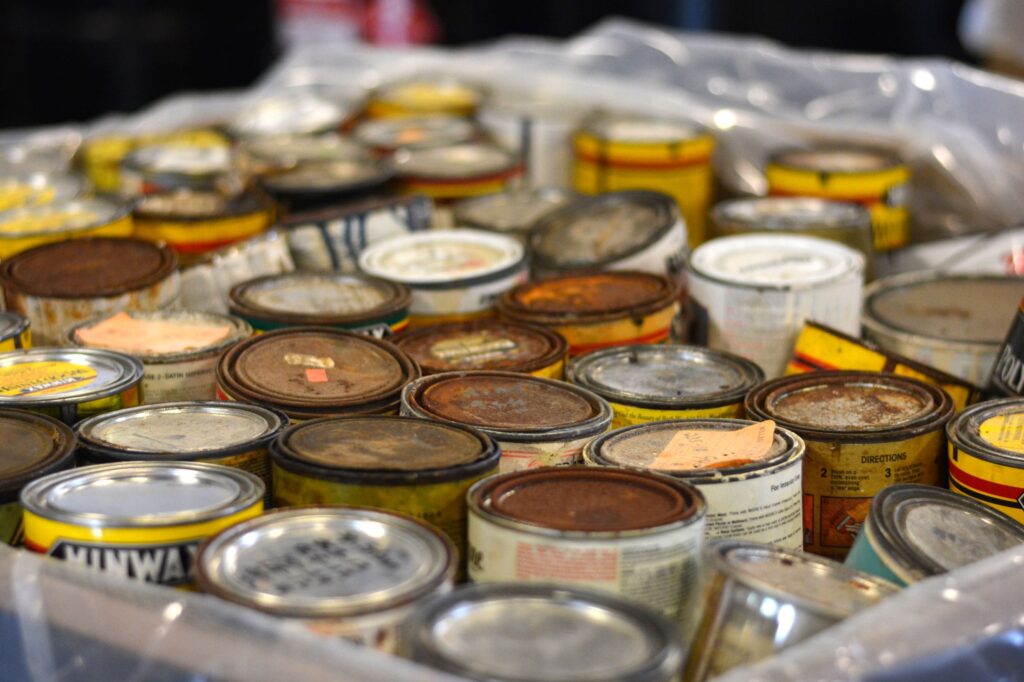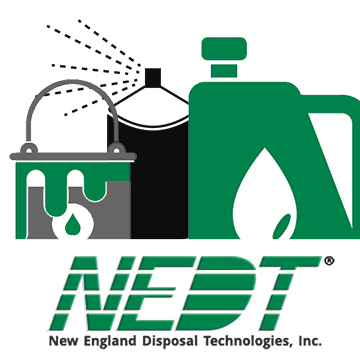By far, the most commonly brought in product to our Household Hazardous Product Collection Centers is paint. Almost every household has cans of paint and stains from previous household projects and gifts from the house painter. Much of it is completely useable and safe if stored and handled properly. Today we’re going to look at the hazards and how to safely store and dispose of paint and stains, including latex.
Handling and Storing Paints and Stains
When it comes to large amounts of all-weather paints used for home exteriors, they generally fall into two categories: oil-based and latex-based paints. In order to make sure paint and stains are safe for use and storage, follow these steps:
- Inspect the paint. Determine if it’s oil or latex-based. Oil-based paint labels often say “alkyd,” “contains solvents,” “clean up with mineral spirits,” or “combustible.” If it contains lead or other heavy metals, it should be set aside for disposal.
- Seal the paint. Especially after just using or reopening, take extra steps to seal the cans again. Cover the opening with a piece of plastic wrap and then place and close the lid over that tightly.
- Store the paint. Oil-based paints are flammable, so take extra care to store them away from high temperatures and sources of sparks. Latex paint becomes unusable if frozen, so store it above freezing. Store the can upside down.
- Reuse the paint. Make sure to reopen the paint in a well-ventilated area. Oil-based paints can contain lead, mercury, chromium, or cadmium and volatile organic compounds (VOCs). Test the paint on a clean surface and allow it to dry for 48 hours.
Learn more in our Fact Sheets, including takeaway PDFs!
How Disposing of Paint and Stains Works
If your paint contains heavy metals such as lead, mercury, chromium, or cadmium, fails the paint test, or you’ve run out of room to store it, you’ve got a few options for disposal. You can dry out latex paint in small batches and dispose of it in the trash (this doesn’t work with oil-based or stains, as they contain VOCs). Many municipalities run a surplus paint collection program: see if your county is involved with one (they usually only take specific kinds). Otherwise, you can come to one of our Household Hazardous Products Collection Centers for paint disposal.
How NEDT Disposes of Paint and Stains
At our facilities, we operate on a hierarchy of disposal choices, with recycling and beneficial reuse at the top. Paints and stains contain high BTU values used by industrial furnaces to produce electricity and as fuel in industrial processes such as cement kilns. These provide greener options than traditional power and help manufacturers close the loop.
Ready to bring in your paint and stains to one of our NEDT Hazardous Household Collection Centers? Find the locations and times that work for you. While you’re making the trip, learn what else we accept to make the trip even more worthwhile. We also have an online price guide. If you have questions or would like to schedule a pickup instead, contact us online or at 1 (866) 769-1621.




Leave a Reply